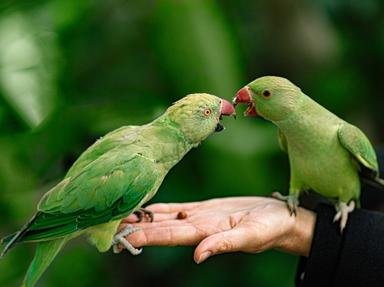Quiz Answer Key and Fun Facts
1. What is a nickname of the budgerigar?
2. Cockatiels cannot be taught to imitate words and sounds.
3. What continent was originally home to most wild lovebirds?
4. Besides being kept as a pet, which bird was taken into coal mines to test for carbon monoxide and other dangerous gases?
5. What feature is NOT one that the hyacinth macaw (Anodorhynchus hyacinthinus) uses to eat?
6. Are cockatoos (Cacatuidae) considered easy pets to keep?
7. How did the rosella originally get its name?
8. Is the cute little Pacific parrotlet known to be an aggressive pet?
9. What is the most common dove kept in captivity in North America?
10. Chickens may be a surprising bird on this quiz about pet birds, but they can be good pets. What is something that is NOT a benefit of keeping a few chickens as pets?
Source: Author
Trivia_Fan54
This quiz was reviewed by FunTrivia editor
rossian before going online.
Any errors found in FunTrivia content are routinely corrected through our feedback system.
